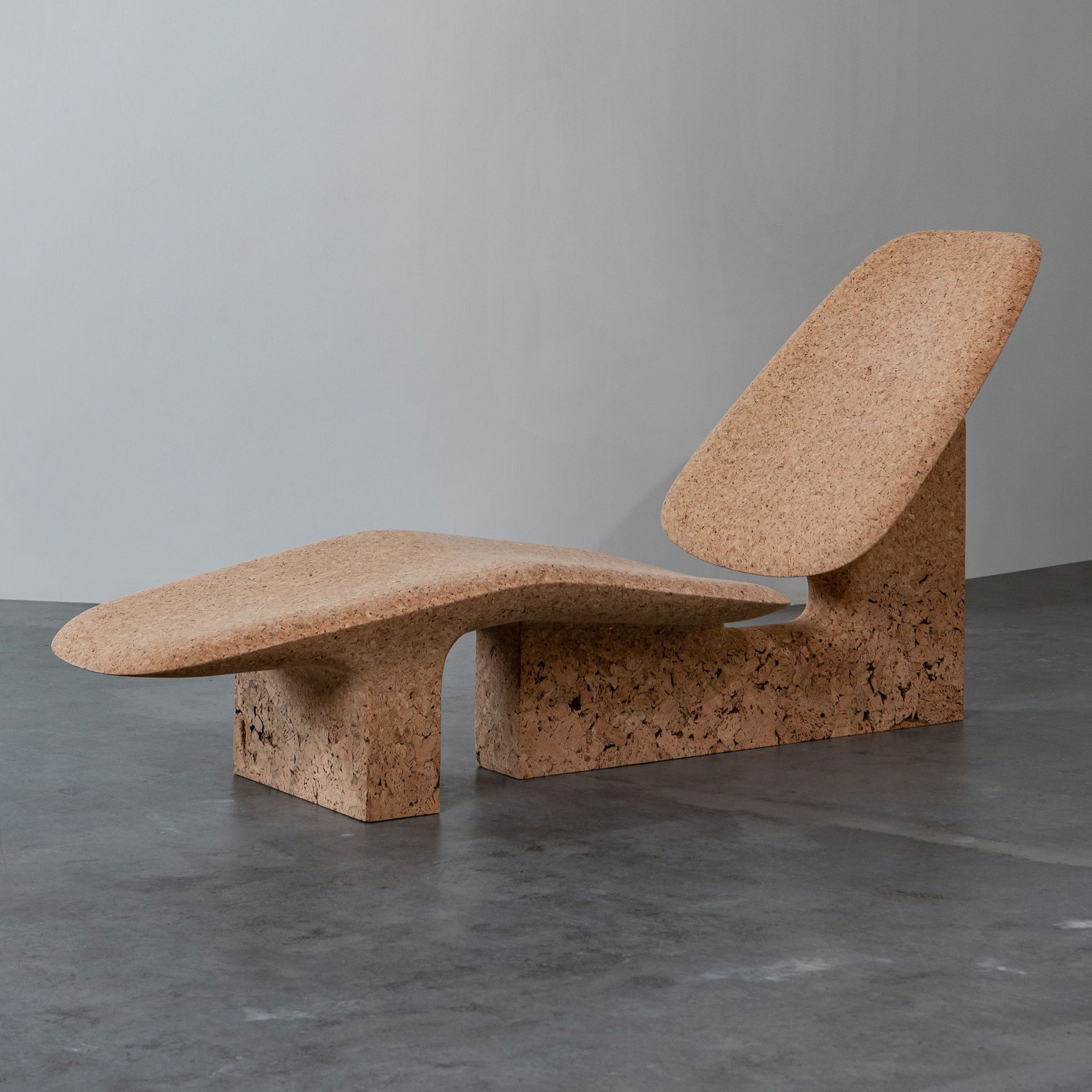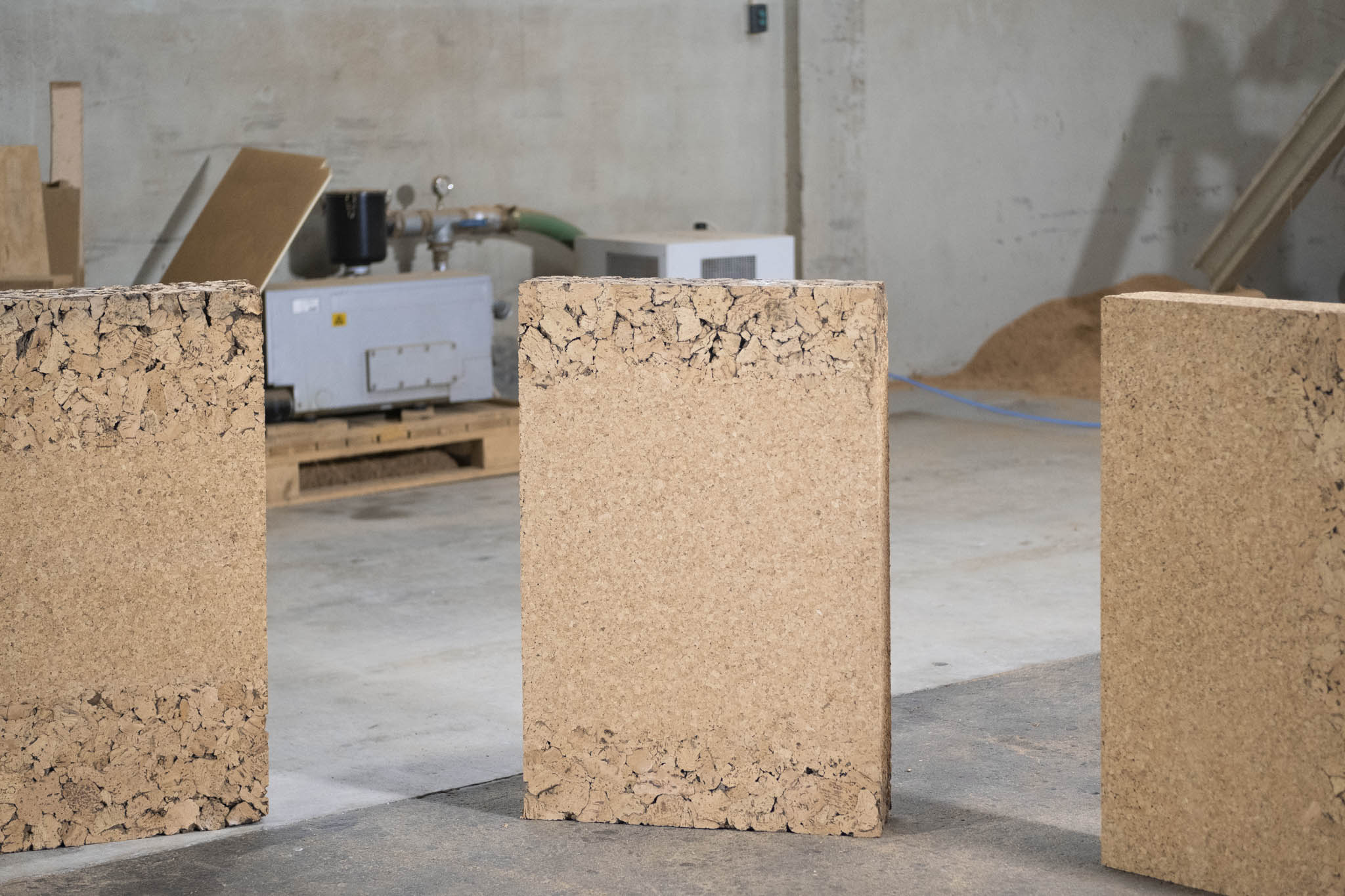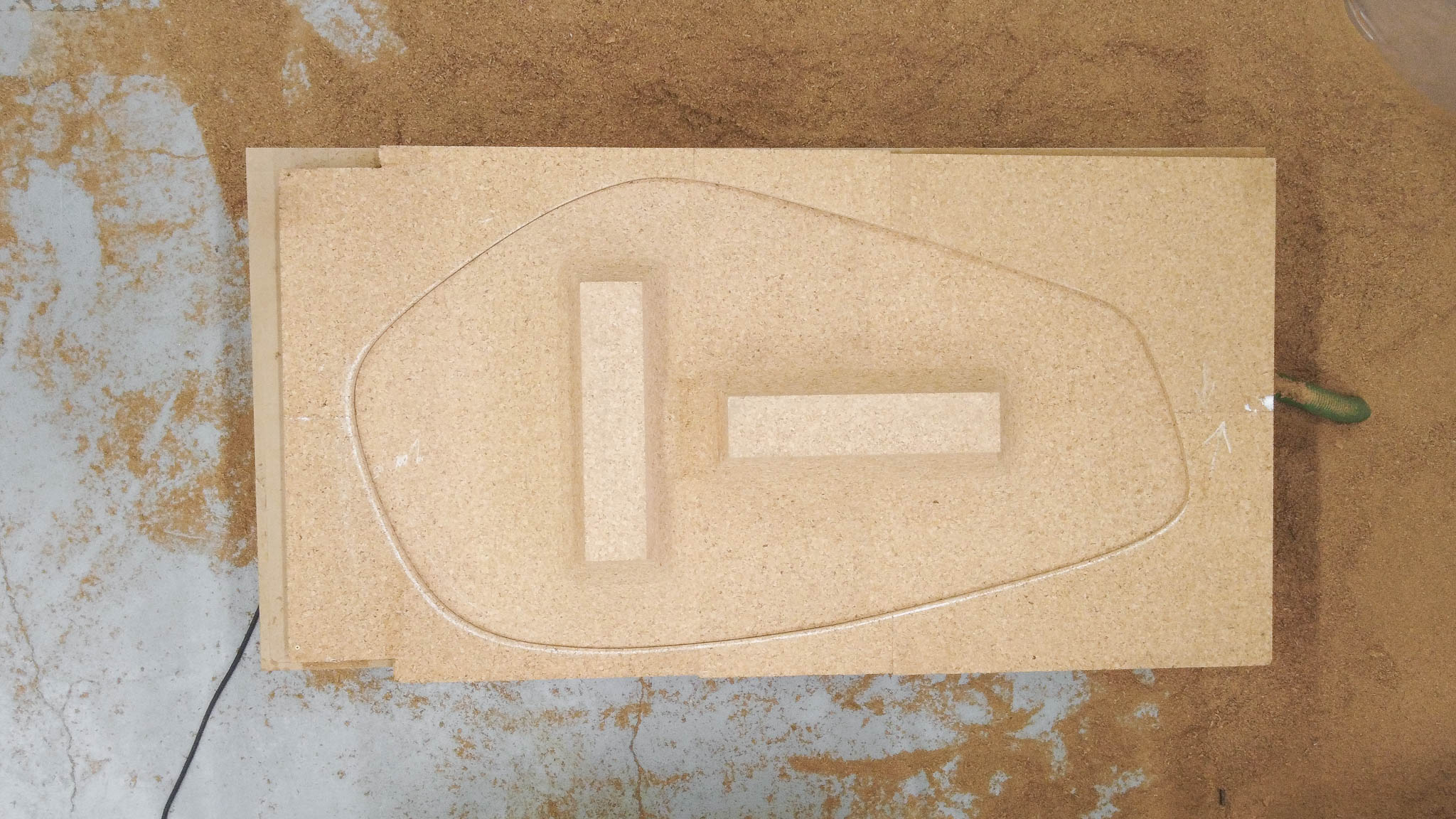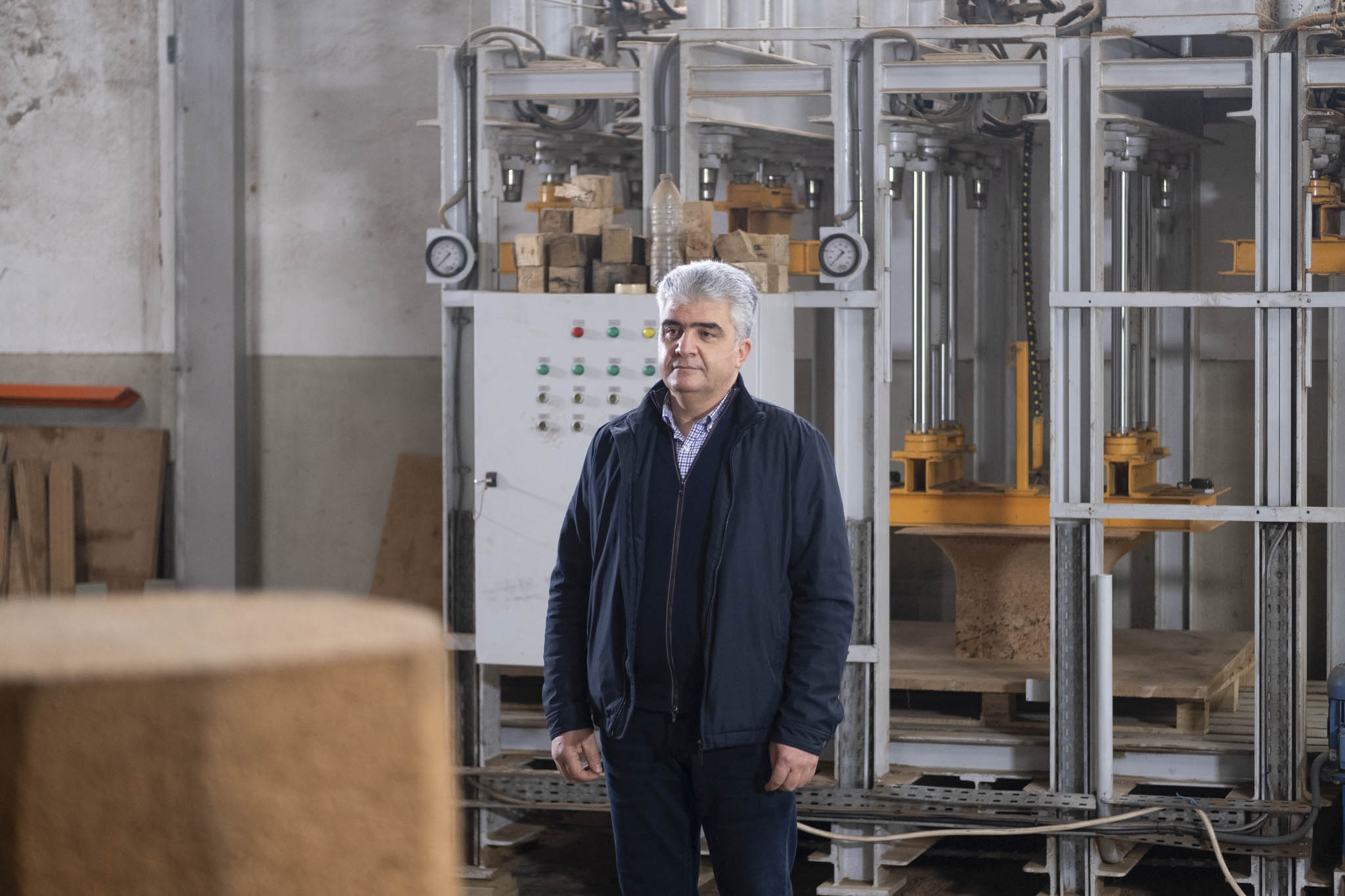Manuel Couto and Granorte teams enthusiastically embraced Noé’s project from the beginning so let us introduce you our manufacturing partner in a little bit more detail.
Manuel is responsible for CNC/3D management & production control at Granorte, the expert department for developing new projects and designs. He has been our main partner, since day 1, on the Burnt Cork adventure.
How did you meet with Noé & the Made In Situ team?
I met Noé through a common contact. I was introduced introduced as the ideal person to lead the manufacturing of design furniture pieces designed by Noé.
How did Granorte contribute to the collection?
We played an important role during the crucial transformation phase, responsible for bringing to life the objects imagined and designed by Noé: our role was to “shape” all the pieces of the collection into their final form, as per Noé’s initial sketch.
Practically speaking, we started with the “raw” material – the handmade, customized blocks the Made in Situ team developed and produced with NF Cork and used our skills, techniques & machines to assemble, sculpt and finish the individual pieces.
You have been working with your 7 axes CNC machining robot for the project. Can you tell us about it?
Yes of course, it is like an arm, an articulated arm, that can be regulated in various positions, in fact, in any position imaginable, so we can create any shape you want, from more or less 3 cubic meter blocks. We also have a turntable that helps us adapt the rotation. The genius lies in the programming work.
It is only thanks to our equipment (the CNC Machine) and our expertise that we can draw the curves of each of the pieces in the collection. I believe Granorte is the only company that could achieve this in Portugal, because we have this Robotic arm.
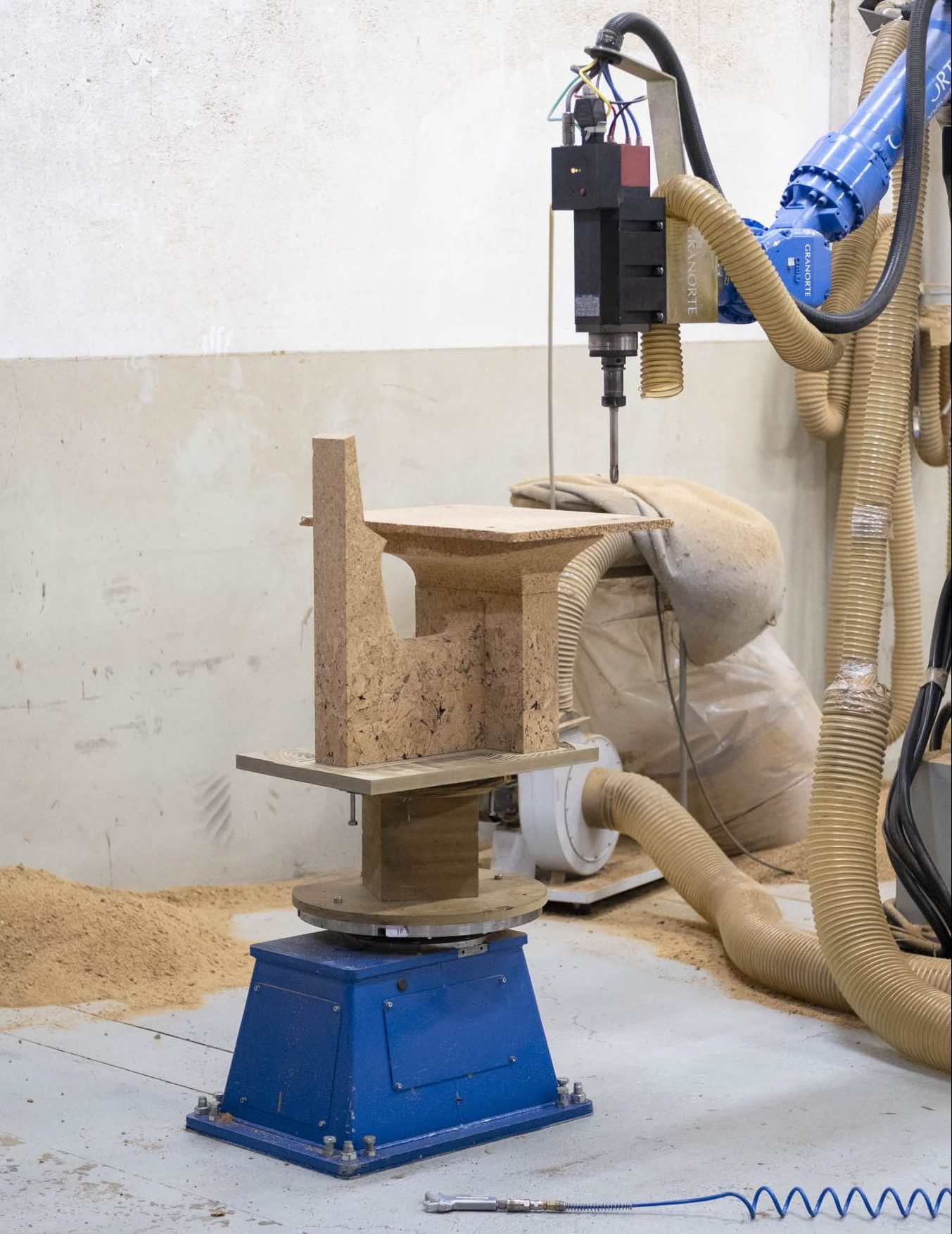
Any surprises along the way?
As you can imagine manufacturing this collection was a challenge. Of course, like any project, constraints and surprises popped up along the way. To produce these pieces we had to call upon all our knowledge, company savoir-faire and production solutions to overcome the many challenges.
Working with new typologies of blocks, cork is still a living material, which means it can sometimes be unpredictable. Going from a semi-industrial process with NF cork to a fully industrial process with a high level of requirements (CNC 7axe machine) askes for a certain flexibilty, time and patience.
In terms of process, there is first a composition step, prior to machine work.
Before going into production, we assemble the required volume of cork necessary for each of the pieces.
In more detail, before starting the assembly and the sculpting of the pieces there are 2 steps. Firstly uniformizing the different blocks, helps the assembly work and the milling of the CNC machine.
Then we move onto the computer work, engineering the assembly like a tetris game, boxing in each different typology of block, gradient and uniform. This phase helps understand where the joints will be, minimizing the quantity of lost cork and optimizing the milling time.
The blocks are joined by glue then placed under a industrial. The first phase of uniforming the blocks is crucial to the process, because when you assemble blocks together they have to have a certain homogeneity erasing any joints visible to the naked eye.
After the CNC machine work has gone through all the different cycles of programming, a final phase is required: The finish. All the pieces need to be finished by hand, this offers the soft touch and regularity between the blocks. Which give the cork its lovely soft texture.
So yes…. As you can imagine many surprises can pop up along the way!
The designs proposed by Noé in this project are very demanding; pieces look simple and fluid, but each shape hides huge complexity in the curves, the balance of the lines. We were highly sensitive to this challenge.
Why did you accept to join the project in the first run?
I feel it is directly linked to our area. The CNC/3D management & production control department at Granorte was born because we wanted to highlight the potential of cork.
This started from intuition. Very few people know how much cork is a “super-material” possessing amazing properties, but it is unusual to link it to any kind of technology. That is exactly why we decided to buy a robotic arm, and start experimenting.
Being able to manufacture objects exclusively out of cork with our CNC machine led us to think that it could open new doors for cork. We thought that with our approach, when people read something about technology, they also learn something about cork as a versatile material. In a way, we try to participate in bringing this iconic material to a new, more modern world.
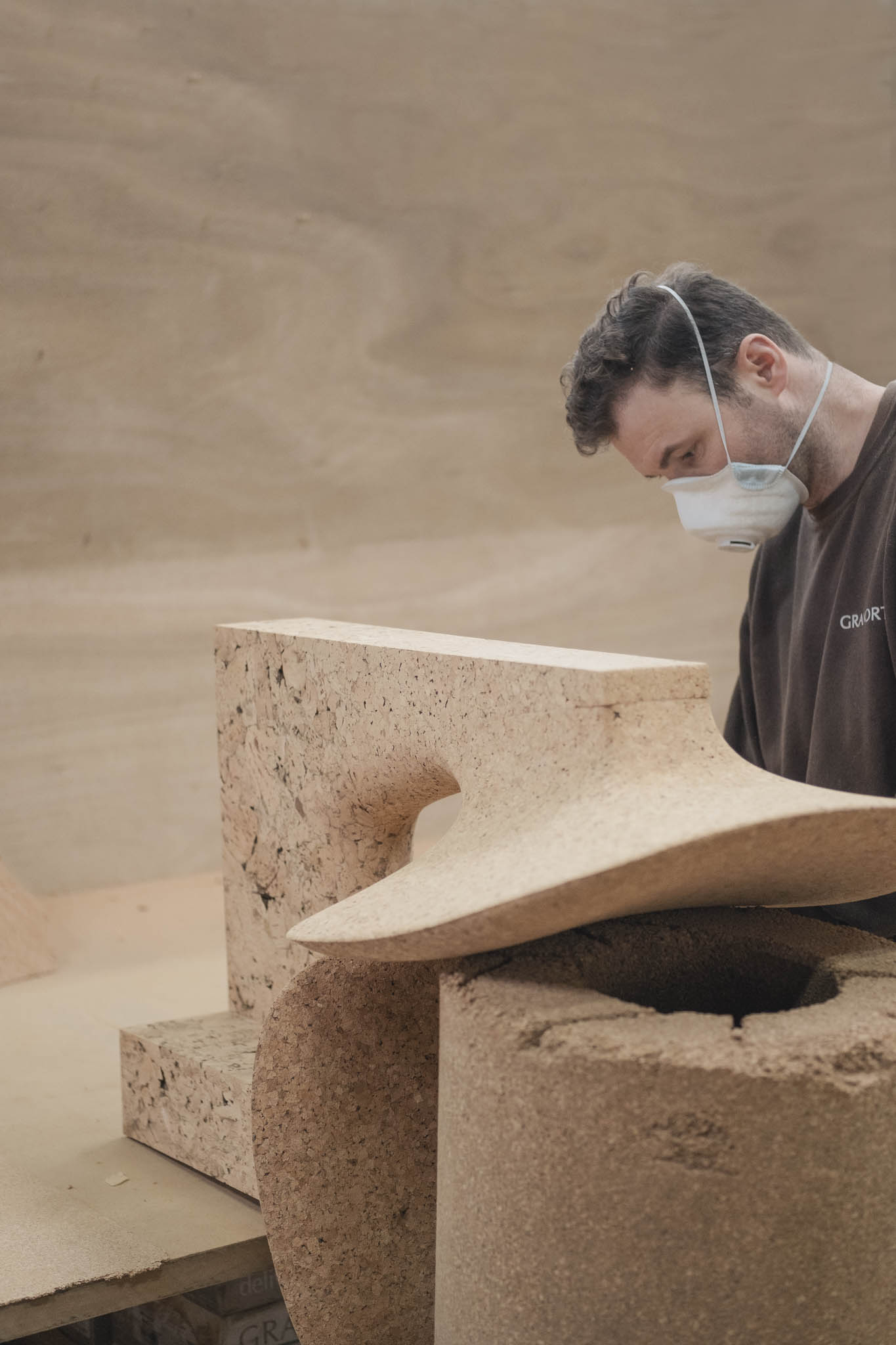
When Noé and his team contacted us, we immediately accepted the invitation to collaborate. It fits our core mission to support people achieving the cork project they have in mind. Also, it represented a smart challenge for us; in the past, we have occasionally worked on sofa’s and small furniture pieces but it was a first for Granorte to lead the manufacturing part of a whole collection of furniture, in cork.
What are you most proud of ?
It is the achievement, the achievement to have everything complete and assembled. And soon to be exhibited at Made in Situ gallery! That is the most important thing for us. Achieving.
The designs proposed by Noé in this project are very demanding; pieces look simple and fluid, but each shape hides huge complexity in the curves, the balance of the lines. We were highly sensitive to this challenge.
Beyond the design of each piece, the mood of the objects, what they evoke, the fact they are solid pieces of cork in the cork blocks, there is a whole story that involves the cork, it has a beginning a middle and an end, which is very unique. The collection of furniture pieces associates comfort, with the family, with the people, with the chairs, and everything that evokes the cork atmosphere, so it is very unique!
What do you take away from this collaboration?
We have been working together on this project for more than 2 years, which is a long project for us! This “long” collaboration enabled us to participate in the different steps of the project, diving deep into process, method and solutions, forcing us to pushsome boundaries further than our usual scope of work.
In the end, our position remains the same: anything requested by the client, we achieve it, we will customise and test, learn new ways to achieve what is needed.
On a more personal note, I have two favorite pieces in the collection; the dining table which is very impressive and the chaise longue for its sculptural lines, I think they are two very unique pieces.
–
Photo credits:
Clément Chevelt
Nuno Sousa Dias
